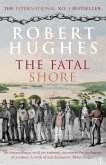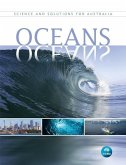The History of QANTAS: From Humble Beginnings to Global Icon Qantas Airways, often referred to as "The Flying Kangaroo," is one of the world's most iconic airlines and the flag carrier of Australia. Founded in 1920, Qantas holds the distinction of being the third oldest airline in continuous operation, after KLM and Avianca. Its remarkable journey from a small regional airline to a global aviation leader is a testament to innovation, resilience, and adaptability. Founding Years: 1920-1930 Qantas was founded on November 16, 1920, in Winton, Queensland, by two World War I veterans, Paul McGinness and Hudson Fysh, alongside local grazier Fergus McMaster. The name QANTAS stands for "Queensland and Northern Territory Aerial Services." The airline was initially established to connect remote outback communities in Australia, where vast distances and harsh terrain made traditional transportation impractical. Using an Avro 504K biplane, Qantas carried both mail and passengers, marking the beginning of its vital role in linking isolated regions. In 1921, the company moved its headquarters to Longreach, Queensland, where it set up its first operational base. By 1922, Qantas had begun its first scheduled passenger service between Charleville and Cloncurry, laying the foundation for its future success. Growth and Innovations: 1930-1945 During the 1930s, Qantas expanded its operations and established itself as a key player in aviation. In 1934, the airline partnered with Britain's Imperial Airways to form Qantas Empire Airways Limited (QEA). This partnership allowed Qantas to operate international flights, including the prestigious route between Australia and the United Kingdom, famously known as the "Kangaroo Route." This marked the beginning of Qantas's transformation into an international carrier. World War II presented both challenges and opportunities for Qantas. The airline contributed significantly to the war effort, transporting troops, supplies, and medical evacuations. Notably, Qantas operated the world's longest non-stop flights during the war, flying unarmed Consolidated PBY Catalina aircraft between Perth, Australia, and Ceylon (now Sri Lanka) across the Indian Ocean. These flights, known as "The Double Sunrise," lasted over 30 hours, providing a vital link between Australia and Allied forces. Post-War Expansion: 1945-1970 After the war, Qantas modernized its fleet and expanded its international services. In 1947, the Australian government acquired Qantas, making it a state-owned airline. The airline introduced the Lockheed Constellation and, later, the Boeing 707, becoming the first non-American airline to operate jet aircraft. These advancements revolutionized air travel, reducing flight times and enhancing passenger comfort. During this period, Qantas solidified its reputation for safety and reliability. It became one of the first airlines to introduce round-the-world services and was instrumental in popularizing long-haul travel, earning its iconic "Flying Kangaroo" logo in the process. Modern Era: 1970-Present Qantas embraced the jet age with the introduction of the Boeing 747 in the 1970s, which became the backbone of its fleet for decades. The airline was privatized in 1995, entering a new era of competitiveness and innovation. In recent years, Qantas has focused on sustainability, introducing fuel-efficient aircraft like the Boeing 787 Dreamliner and achieving milestones such as the first non-stop flight from Perth to London in 2018. Today, Qantas is recognized for its exceptional service, safety record, and pioneering spirit, maintaining its status as a global aviation leader while continuing to honor its Australian heritage.
Hinweis: Dieser Artikel kann nur an eine deutsche Lieferadresse ausgeliefert werden.
Hinweis: Dieser Artikel kann nur an eine deutsche Lieferadresse ausgeliefert werden.








